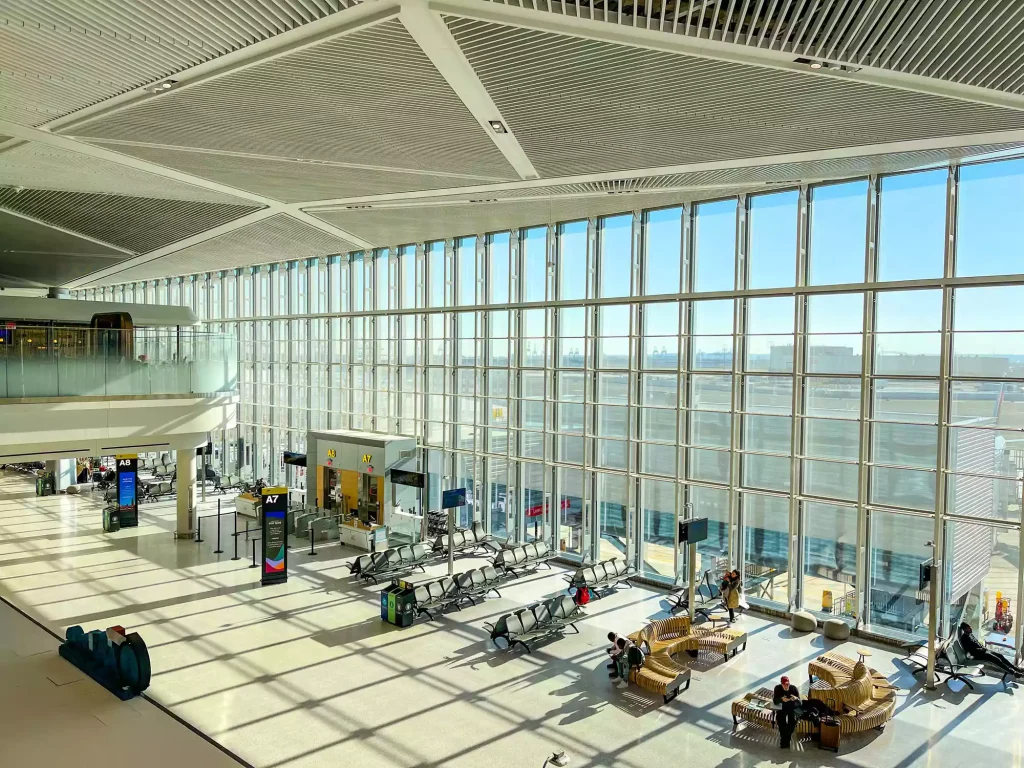Worsening U.S. Air Traffic Control Shortage Forces a Second Ground Stop at Newark Liberty International Airport in One Week
For travelers hoping for a seamless embarkation from Newark Liberty International Airport (EWR) this weekend, the day began with a jarring reminder that even major hubs are not immune to sudden operational disruptions. On Sunday morning, the Federal Aviation Administration (FAA) issued a ground stop for departures bound for Newark, only to convert it hours later into a ground-delay program, marking the second such disruption at EWR in the space of a week.

The advisory, published by the FAA’s Air Traffic Control System Command Center (ATCSCC), attributed the halt to a shortage of certified air-traffic controllers in Newark’s control tower — a vulnerability that has become increasingly acute amid broader federal workforce strain. According to local officials, arrivals were being limited to as few as 20 planes per hour, while the average delay for flights into Newark soared past 100 minutes, with some delays reaching more than 210 minutes.
The ripple effects were immediate and widespread. Travelers, already bracing for the Thanksgiving travel surge, found themselves re-routing, waiting in gate holds, and facing missed connections as the network buckled under the strain. The city’s emergency management agency warned that delays at Newark often bleed into nearby airports like John F. Kennedy International Airport (JFK) and LaGuardia Airport (LGA), compounding disruption across the New York/New Jersey corridor.
What may appear as a singular event is in fact symptomatic of a deeper, structural challenge. The FAA is reportedly operating with thousands fewer air-traffic controllers than needed, a situation worsened by a government shutdown that has left many employees working without pay or hesitating to come in amid personal financial strain. Analysts say the Newark chaos underscores how critical staffing shortages are no longer just a matter of delayed flights — they have become a national safety concern.
Historically, ground stops like the one at Newark are issued when conditions at an airport — be it weather, runway closures, or equipment failures — render operations unsafe or unsustainable. But in this case, the trigger is human capital: the absence or unavailability of controllers. For instance, a prior advisory in May 2025 proposed reducing flight rates at Newark to 34 arrivals and 34 departures per hour precisely because the system could not reliably handle existing traffic volumes.

For airlines, the financial and operational burdens are palpable. One carrier reported canceling dozens of daily roundtrip flights out of Newark earlier this year, citing controller shortages and aging infrastructure. While that move was made months ago, the current ground stop adds fresh urgency. Airlines already operating on tight margins must now absorb greater variability and reputational risk from delays that are neither weather-related nor purely mechanical, but deeply systemic.
From the traveler’s perspective, the weekend disruption at Newark serves as a cautionary tale. Even when flight-status apps show on-time departures, the underlying network stress means that plans can unravel at the origin or en route. Airport officials and industry watchers are urging passengers to verify their flight information, arrive early, and prepare for contingencies such as rebooking or extended layovers.
Beyond immediate inconvenience, the situation raises profound questions about the resiliency of the national air-traffic system. Can airports like Newark continue to serve as major hubs if they lack dependable staffing and modernized control infrastructure? One industry insider described the current environment as “a steady hum of risk — the system is creaking under old gear and lean staffing, and even a minor disturbance can cascade into major gridlock.”
From the public’s vantage, a ground stop touches more than the inconvenience of waiting at the gate. It strikes at timeless assumptions: that major airports will function like well-oiled machines, that controllers at towers will always be standing by, and that disruptions will be addressed swiftly before they affect millions of travelers. When those underpinnings falter, the confidence that sustains travel choices begins to erode.
In that context, Newark’s Sunday stoppage carries greater weight. It is not an isolated incident. It is a manifestation of an infrastructure system under duress — one that must manage airspace over one of the busiest corridors in the Western Hemisphere, with inadequate staffing and outdated systems. The FAA’s decision to convert the ground stop to a ground delay program may have softened the immediate impact but signaled that the airlines and travelers remain at the mercy of systemic constraints.
While the FAA and carriers have promised accountability and long-term improvements, change is slow. Funding cycles, training pipelines for controllers, and technological upgrades all take years. Meanwhile, the holiday-season surge looms, and with it the risk of repeated disruptions, backlogs, and frustrated passengers. Some experts suggest the Newark event may represent a foreshadowing of what other major hubs might face if staffing shortages continue and demand keeps accelerating.
Many travelers voiced frustration or incredulity on social media, recounting hours of wait time, missed connections, and breakdowns in customer service. Others noted the eerie irony of arriving at a busy hub only to find aircraft grounded — not because of weather or mechanical breakdowns, but because the people who guide flight paths are stretched too thin or absent. For an industry driven by timing and reliability, it’s a sobering moment.
A key question now is how airlines, regulators, and airport authorities respond. Will they institute temporary flight caps, hire contingency teams, or preemptively adjust schedules to avoid further gridlock? Newark’s experience suggests that simply hoping for the next day to run smoothly may not be sufficient. Proactive management may become the default.
Nevertheless, beyond the organizational complexity and potential business losses, there is a human dimension. For families dashing to board a flight home for the holidays, delayed arrivals at a destination, missed connections, or extended time in a crowded terminal can transform what should have been excitement into stress. For airport and airline employees already facing pressure from staffing shortfalls, the added burden of managing anxious customers and behind-schedule operations contributes to fatigue and turnover — a vicious cycle in the making.
As the region and national system absorb the implications of the Newark stoppage, the broader aviation community watches closely. If one of the country’s core hubs can no longer reliably handle its scheduled volume because of controllable staffing issues, what does that signal for the resilience of the air-travel network as a whole? Among the debates gaining traction is whether flight schedules need to be intentionally pared back, whether some airports must accept reduced capacity, and whether Congress should move more aggressively to solve the staffing and infrastructure backlog.
For now, travelers moving through Newark and the New York/New Jersey corridor are advised to remain vigilant: check directly with airlines for updates, expect delays, and if possible, build in buffer time before onward plans. The sudden and second-time-this-week ground stop at EWR is a stark reminder that the air-travel ecosystem is only as strong as its weakest link. When a control tower is understaffed or an arrival slot is sharply reduced, the consequences ripple far beyond one airport gate.
In the coming days, how Newark responds to this shock may provide lessons for the broader aviation sector. Whether through schedule adjustments, staffing reinforcements, or public protections, the choices made now could determine how resilient the system is for the surge ahead. If not, what happened Sunday may feel like the beginning of a more pervasive breakdown.



